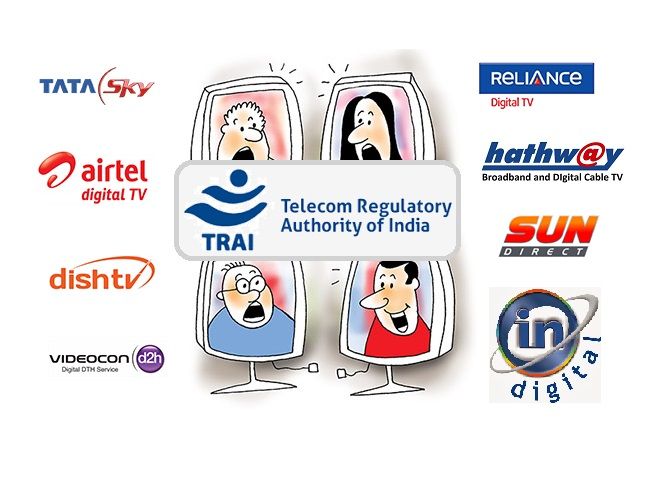The Trai order is expected to change how consumers pay for cable or DTH services.
This will result in disruption within the TV viewing market.
Urvi Malvania reports.

2019 may not start on a great note for the country's top broadcasters and distribution platforms.
This is because the Telecom Regulatory Authority of India's tariff order on channel pricing and packaging will come into play and will allow consumers to select and pay for individual television channels from January 1.
The order is expected to change the way and also the rates that consumers will now have to pay for cable or direct-to-home (DTH) services. This will result in disruption within the TV viewing market.
Given the chaos, broadcasters have now called for a ratings dark period of six to eight weeks, starting January, aimed at adjusting to the new regime.
A crucial board meet of the Broadcast Audience Research Council of India (BARC), which comes out with TV ratings every week, and where the matter of a blackout is expected to be discussed, will be held, sources in the know said.
While BARC refrained from commenting on the issue, sources in the know said no official communication for discussing the issue had been initiated by the Indian Broadcasting Foundation yet.
BARC is a joint industry body, wherein IBF, representing broadcasters holds 60 per cent stake.
The remaining 40 per cent is equally owned by advertisers, represented by the Indian Society of Advertisers, and agencies, represented by the Advertising Agencies Association of India.
The shift in the tariff regime means there will be a period of adjustment for the consumers as they get used to the new regime, sources said. According to the order, all channels have to be offered on an a la carte basis.
Broadcasters and distribution platforms can provide bundles, but if a consumer wants one channel less or more, the platform would have to provide it on an a la carte basis.
Additionally, the order also disallows any price disparity between cable digital platforms and DTH operators.
The period of adjustment will entail that the viewership of most channels will fluctuate until the new subscription patterns have been set.
"This will impact the long-tail or niche channels more since viewers may not opt for them on an a la carte basis. Until now, they were available as part of bouquets, which led to some inevitable sampling on the consumers' part," said a senior broadcast executive.
Even in case of mainstream drama, news and sports channels, there could be lower ratings, experts said.
Since advertising spots are sold on the basis of reach and viewership, TV ratings become the currency on which advertisers, agencies and broadcasters trade.
Given the fluctuation anticipated in accessibility, reach and consumption of TV channels in the period of adjustment during the shift to the new tariff regime, broadcasters have called for reporting for suspension of ratings.
"Historically, we have seen it takes the industry 2-3 months to adjust to a change in operation. So, when we went from analogue to digital distribution, the ratings were held back for around nine weeks. Similarly, ratings were not released when the measurement agency moved from TAM to BARC. Hence the suggestion that ratings reporting be suspended for six to eight weeks," added another broadcast executive on condition of anonymity.
If a ratings blackout does happen, it will be the third time in six years when the TV industry will have a period of no ratings. However, the data could be released retrospectively, said experts.
In the past too, data for the ratings dark period was released once the restriction on reporting TV viewership was lifted.
|
TRAI tariff order |
|











